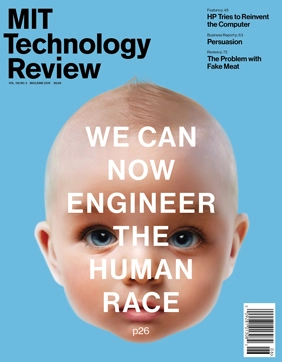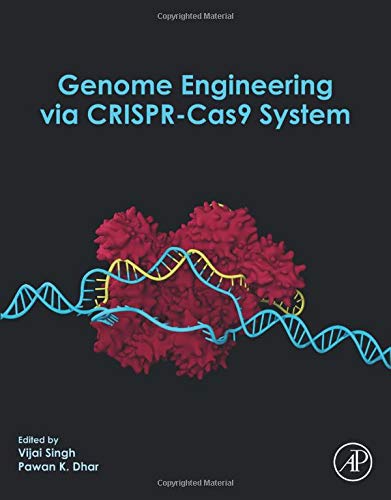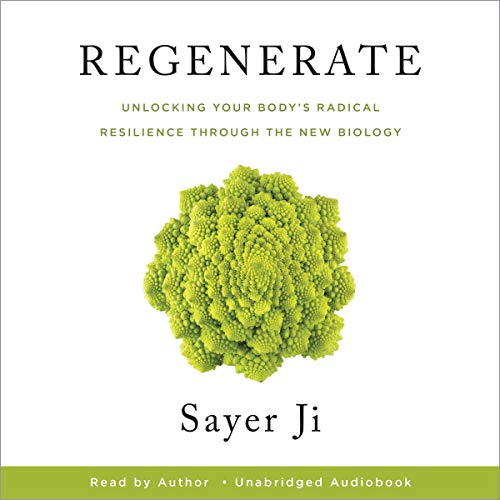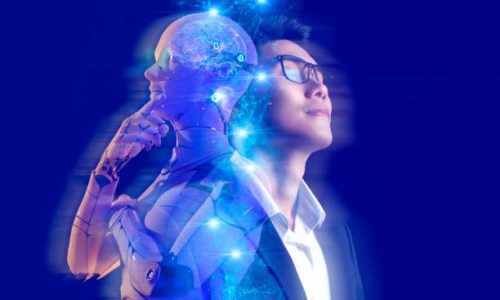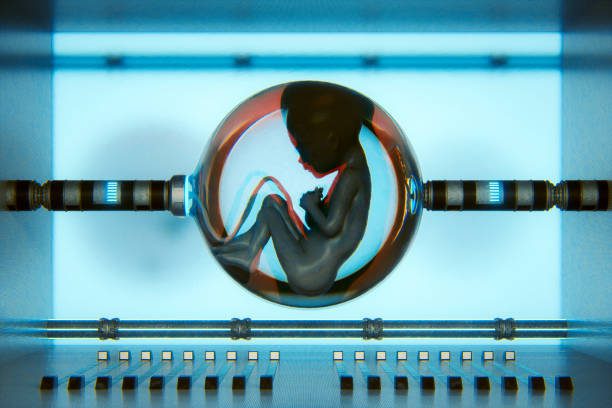In a world, where we can customize almost everything, we want to suit our personal preferences – from clothing and electronics to food consumption – it seems almost odd to leave everything as colossal as creating the perfect human being.
As we live in an increasingly advanced society, we’ve grown familiar with making curated choices and getting what is in demand. Thanks to the ever-growing technology, we have the amount of control over our everyday lives that people never used to have before.
So, shouldn’t this apply to humans? People using IVF can now see which embryo is least likely to develop inheritable diseases, scientists can edit genes to make perfect babies, regeneration is applied to human cells to defy aging, and even cheating death through genetic engineering – that’s how technology plays God. In this article, let’s examine the different ways technology create and modify life.
Creating a new species with the perfect genes through PGT-P
Designer babies are not just a trend but more like an answered prayer for people struggling with repeated miscarriages or a history of multiple genetic diseases. Forty years ago, the only information expectant parents had about their fetuses came from uncolored ultrasound photos. Now parents cannot only learn about the genetic makeup of their unborn baby but also decide on which embryo to grow. Nancy C. Andreasen, author of the “Brave New Brain: Conquering Mental Illness in the Era of the Genome” explains how scientists conquer mental illness by mapping the human genome, whose 30,000 to 40,000 genes are almost all active in the brain.
Using preimplantation genetic testing for polygenic disorders (PGT-P), parents can now pick the best and healthiest embryo in a laboratory setting. Before embryos are injected into the woman’s uterus, they are pre-screened for a range of genetic problems that can cause implantation failure and birth defects.
Right now, there are two types of genetic testing to test abnormalities – whole chromosome testing for detecting trisomy abnormalities like Down syndrome; and single gene disorder testing for diseases like cystic fibrosis, muscular dystrophy, and sickle cell disease.
Parents are given the opportunity to look into several sample embryos and see their genetic profiles before they are conceived. Decisions are then made based on the strength of each embryo. By checking thousands of genes, you can make predictions of things that start to be very relevant for aspiring parents, including attractiveness, height, or intelligence. Soon, the test will become widely available to enable doctors to screen unborn babies for some 3, 500 genetic disorders.
Stopping genetic disorders in newborn babies through CRISPR-Cas9 gene editing
Genome editing – also known as gene editing – helps modify the genes of living organisms to improve the genetic profile of a species and stop the development of acquired diseases. The process utilizes CRISPR-Cas9 editing technology, which is adapted from the natural defense mechanisms of archaebacteria. The goal is to edit and reprogrammed a specific sequence of DNA, particularly in the CRISPR-Cas9 receptor. Think of it like a precision scalper, gene silencer, or gene amplifier, where the CRISPR-Cas9 receptor is modified to stop a particular disease from developing in the future.
One of the first scientists to alter the genes of an unborn baby was He Jiankui of the Southern University of Science and Technology in Shenzhen, China, where he operated on a live gene to alter the chance of the baby developing an HIV infection in the future.

To do this, scientists target a particular gene sequence and cut it out, and then glue the remaining gene strands together. With the help of technology, specific messages can be inserted into the DNA sites and reprogrammed the DNA profile of the developing baby. The aim is to bring to the world a perfectly healthy baby to expectant parents. “Genome Engineering via CRISPR-Cas9 System” explains many other uses of gene engineering via the CRISPR-Cas9 gene receptor.
Engineering “The Perfect Baby” Through Stem Cell Development

Imagine being able to conceive a child from another person’s “skin cells”. We all know that children are produced through sexual intercourse between a fertile male and female person. But artificial wombs and embryos made from skin cells have become a remarkably new technique to reproduce the human species. Over the past 30 years, scientists have been growing stem cells to be used for regenerative medicines but this revolutionary technique was discovered when scientists took “pluripotent” skin stem cells – cells that can form into any type of embryonic cell to make early egg cells – to reproduce humans out of stem cells. In the process, the pluripotent skin stem cell was reversed and made into early egg cells. As soon as the stem cells became egg cells, sperms were added to them in the lab setting until they became embryos. The first stem cell embryos were placed in a mouse, which created mouse babies.
Like cloning, although making embryos out of skin cells never took off for humans, this revolutionary technique of human reproduction may just be right around the corner. Who knows the technology will be available to make human embryos in the future. Stem Cell Revolution has explained the many different ways stem cell therapy has reversed the effects of degenerative diseases by re-growing healthy cells in the body – the same principle is used in creating embryos from stem cells.
Regeneration of limbs in the future through genetic engineering
Nature has many things that humans cannot control such as death. Because of this scientist are studying how to control the degeneration of human tissues and stop the decline of organ functions, not just to cure deadly diseases like cancer but also to extend human life.

Scientists have been trying to understand how cells in the body communicate as electrical networks to read, write, and interpret bioelectrical information that could be used to reprogram cells and help with regeneration. It has been found that as a larger species dies, the single cell remains alive in its body. This cell can be combined with other cells to morph into a bigger cell or a new cell, which can give birth to a new live organism. When applied to medical science, it helps regenerate a damaged cell in a person suffering from rare diseases like leukemia or cancer.
While scientists are still finding a cure for cancer, we see larger selves appear and disappear before our eyes every day. Scientists, however, have seen this as an opportunity to understand how the body of all living organisms evolves or morphs. Who knows, the answer could just be lying there, waiting to be discovered not just to cure diseases like cancer but also to cheat death.
Stopping the effects of aging through cellular regeneration or stem cell therapy

As mortals, our lifespan is limited. If there’s one thing that people cannot defy other than death – it’s aging. Even so, scientists are taking a step closer to the main goal through stem cell therapy. While we still cannot stop the physical age, the current knowledge of stem cells makes it technically feasible to delay the effects of aging and improve both health and lifespan. In combination with anti-aging genes, scientists were able to create a sophisticated shield to keep people looking young even during their later years.
In stem cell therapy, your healthy cells are taken out of your body and injected back to repair damaged tissues and regenerate healthy cells. It lies on the principle that your body is made up of millions of cells, which can stop degenerating as you age. When healthy stem cells are implanted in your body, they regenerate and repair themselves, therefore retaining your youthfulness – and consequently increasing your lifespan.
Another age-defying method is cellular rejuvenation. Unlike stem cell therapy, it doesn’t only delay aging but reverts it, leading to the production of younger cells, tissue, or body. According to bio-technologists, the method can reverse human skin skills by 30 years younger. Imagine, rewinding the aging clock without losing its function – that is the effect of cellular rejuvenation. It erases age-accumulated damage and aging hallmarks in humans and is expected to extend lifespan and ultimately to eternal life. The book “Regenerate: Unlocking Your Body’s Radical Resilience Through the New Biology” explains the fascinating technology and science of cellular regeneration in keeping your youthfulness.
Resurrecting retinas after death through electrical activity in the eyes
How can humans live forever? When a person dies, we understand that such a phenomenon is irreversible. But while we used to believe that certain biological facts become irrevocable after death, a new study has challenged the dogma.
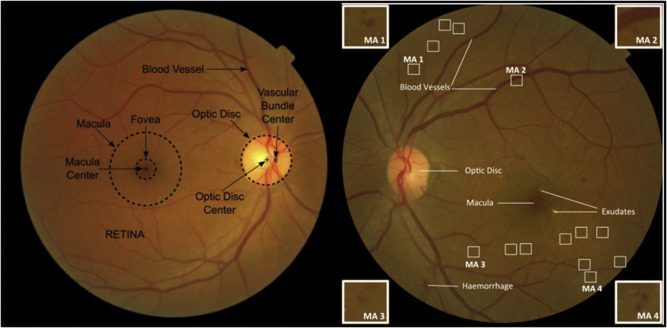
In a new experiment, New York bio-technologists were able to restore eye tissue postmortem – which lead to the revival of other types of brain tissue. Scientists first experimented on the eyes of a mouse, in which they were able to restore this activity up to three hours later – and found that the major cause of death was lack of oxygen. Later on, they applied the same experiment to humans by exposing the retinal tissue to dim light and measuring electrical signals generated by the tissue. Scientists were able to re-establish electrical activity in light-sensitive cells in the retina called “photoreceptors”, and kept it alive for a couple of minutes. Of course, the eyes cannot see but the study proved that the communication between the eyes and the brain was reconnected. Reviving a single cell in the human body post-mortem is only the beginning. More studies have been conducted to revive other tissues in the body, including the brain.

Conclusion
Technology has completely transformed the way biologists study biology. It has given basic scientists a new and more powerful way to inquire into many things around us, including human development. For example, technology has found a way to develop life in the laboratory setting and assisted in gene editing through state-of-the-art software solutions. Given the ability to make humans artificially, advancement in technology will only have its way forward. The holy grail of technology when applied to biology and regenerative medicine is to be able to make new life or repair damages in the human body to extend life. Do you think technology will finally find its way to stop people from actually aging? Would you believe that technology can finally defy death 10 to 20 years from now? Or are we slipping into playing God?
Never before in the history of medical technology, microelectronics, engineering, nanotechnology, cellular and gene therapy, and robotics has mankind faced such hope for technological miracles until we’ve come to embrace radical medical technologies. But according to the book by Eve Harold, “Beyond Human: How Cutting-Edge Science Is Extending Our Lives”, these technologies will sooner or later dramatically transform our lives and allow us to live for hundreds of years. Feel free to drop your comments down.

